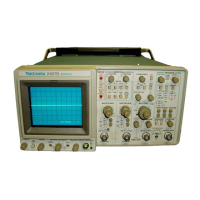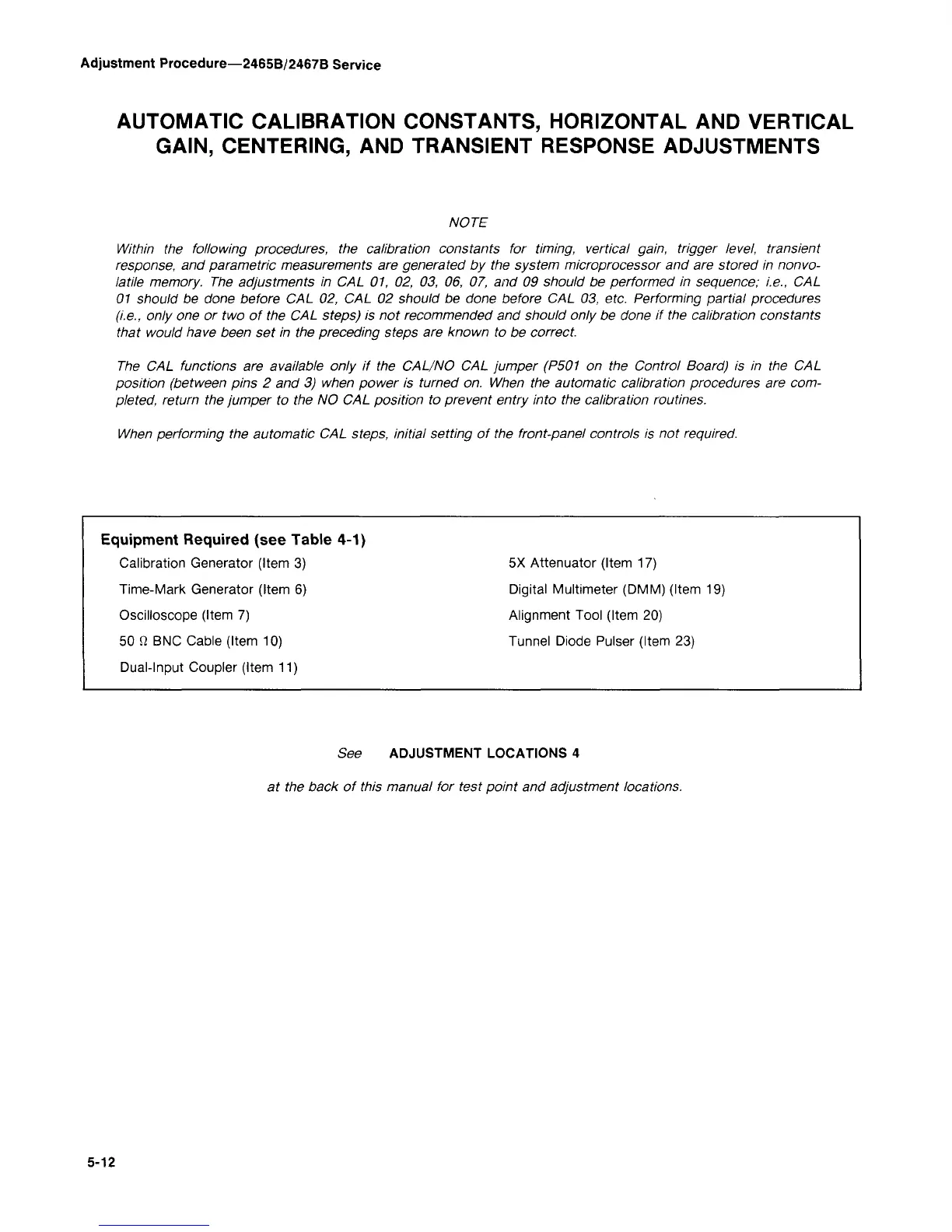Adjustment Procedure—2465B/2467B Service
AUTOMATIC CALIBRATION CONSTANTS, HORIZONTAL AND VERTICAL
GAIN,
CENTERING, AND TRANSIENT RESPONSE ADJUSTMENTS
NOTE
Within the following procedures, the calibration constants for timing, vertical gain, trigger level, transient
response, and parametric measurements are generated by the system microprocessor and are stored in nonvo-
latile memory. The adjustments in CAL 01, 02, 03, 06, 07, and 09 should be performed in sequence; i.e., CAL
01 should be done before CAL 02, CAL 02 should be done before CAL 03, etc. Performing partial procedures
(i.e.,
only one or two of the CAL steps) is not recommended and should only be done if the calibration constants
that would have been set in the preceding steps are known to be correct.
The CAL functions are available only if the CAL/NO CAL jumper (P501 on the Control Board) is in the CAL
position (between pins 2 and 3) when power is turned on. When the automatic calibration procedures are com-
pleted, return the jumper to the NO CAL position to prevent entry into the calibration routines.
When
performing the automatic CAL steps, initial setting of the front-panel controls is not required.
Equipment Required (see Table 4
Calibration Generator (Item 3)
Time-Mark Generator (Item 6)
Oscilloscope (Item 7)
50
P.
BNC Cable (Item 10)
Dual-Input Coupler (Item 11)
■1)
5X Attenuator (Item 17)
Digital Multimeter (DMM) (Item 19)
Alignment Tool (Item 20)
Tunnel Diode Pulser (Item 23)
See ADJUSTMENT LOCATIONS 4
at the back of this manual for test point and adjustment locations.
5-12

